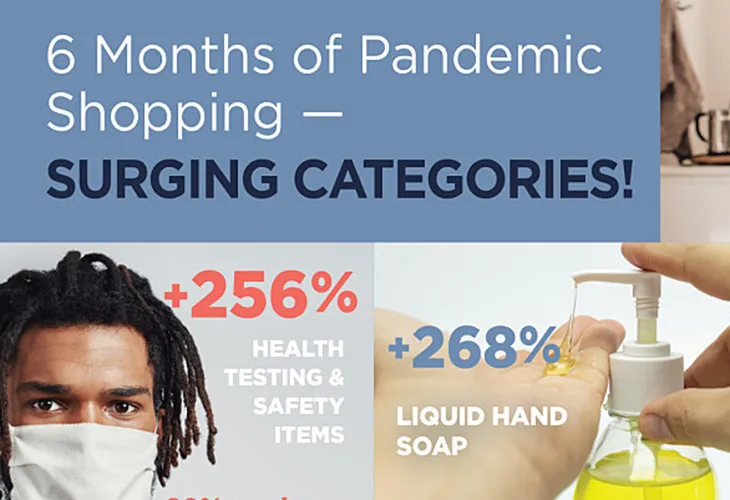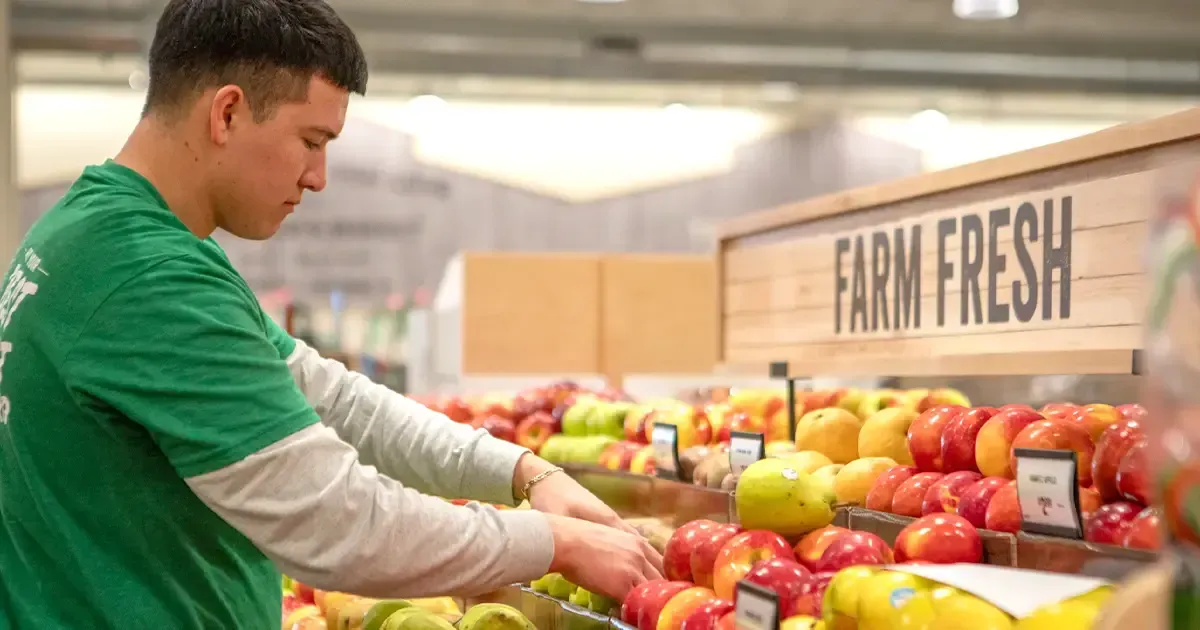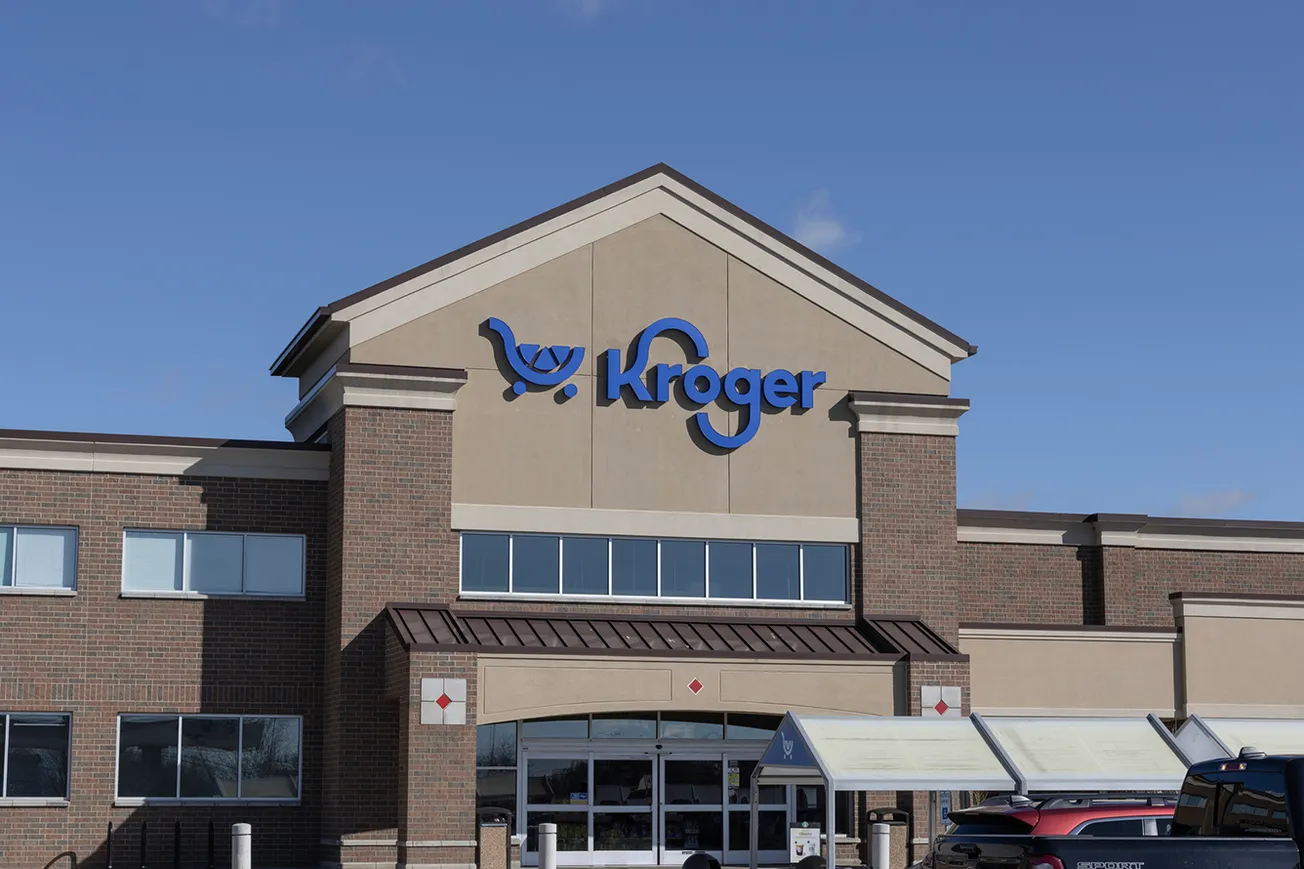
ST. PETERSBURG, Fla. — Grocery shopping has changed significantly in the six months since the World Health Organization declared COVID-19 a pandemic, according to Catalina.
The shopper intelligence firm said that people continue to spend more at the grocery store each month during the pandemic, while taking fewer trips. In August, spending per trip increased by 6%, with an overall increase from $310 to $330 per month, while shopping trips were nearly 11% lower compared to the same period in 2019.
“Our data scientists and advanced analytics teams have been mining Catalina’s unparalleled Buyer Intelligence Database, which captures up to three years of purchase history and more than two billion Universal Product Codes that are scanned daily in the U.S., to track how buying behavior and decisions have continued to shift since concerns over COVID-19 took hold earlier this year,” said chief marketing officer Marta Cyhan. “These real-time insights have helped our retail and brand customers adjust their marketing, media and activation strategies, while also helping to inform their stocking and supply chain decisions.”
In reviewing the past six months of data, Catalina noted that shoppers made more trips than average in March as the pandemic set in, then greatly reduced trips in April as they hunkered down at home. This gave way to new routines starting in May that continue through today with the number of grocery store runs down approximately 10% from May through August. Specifically:
- Shoppers made an average of 6.7 retailer trips per month in Aug. 2020, down from 7.5 retailer trips per month compared to August 2019, a decrease of nearly 11%.
- Shoppers are making larger retailer trips, spending an average of $49.28 per trip in August 2020, up from $41.38 in August 2019, an increase of 19%. This has been consistent since June.
- Overall, shoppers are spending more at your typical grocery store this year vs. last year: an average of $330 per month in Aug. 2020 vs. $310 last year. The difference was even more dramatic in March-May, before starting to come down in June.
In early April, Catalina launched a COVID-19 Interactive Map on its website to report sales data across 78 major grocery and drug categories from states across the U.S., plus the District of Columbia, going back to the week ending Feb. 15 when coronavirus awareness and concerns began to gain traction in the U.S.
The most recent data pull shows the country overall is seemingly populated by more health-conscious bakers (coincidence that 75% of the country has gained weight since the lockdown?) with a penchant for bacon of the light, turkey or chicken variety (continuing a decline in pork bacon sales that began before the pandemic).
While the top 6 categories over the past six months jumped around from March through May, they have held the same ranking for the past 3 months. When comparing August 2020 to the same period a year ago, sales surges in the following categories have continued unabated:
- Home Health Testing Kits (includes Face Masks) – up 367%
- Liquid Hand Soaps – up 224%
- Disinfectant Cleaners – up 212%
- Bacon (Light/Turkey/Chicken) – up 121%
- Yeast (Dry/Refrigerated) – up 103%
- Cleaners (Produce/Wash & Rinse) – up 102%
Notably, face masks account for 80% of the home health testing category, which accounts for the strong sales surge as more governing bodies emphasize the importance of wearing face coverings to help prevent the transmission of COVID-19.
The top six categories overall for the six months beginning in March through August 2020 include:
- Liquid Hand Soaps – up 268%
- Home Health Testing Kits (includes Face Masks) – up 259%
- Disinfectant Cleaners – up 212%
- Frozen Meal Starters – up 189%
- Meat Substitutes (Shelf-Stable and Refrigerated) – up 126%
- Yeast (Dry & Refrigerated) – 117%
“Due to the pandemic, many new buyers came into center store categories that were declining in 2019. We are partnering with our clients to convert those buyers from panic buyers to loyal buyers,” added Cyhan. “We will continue to monitor our Buyer Intelligence Database to keep our customers informed of changing shopping behaviors and sales impacts, including when purchase cycles become more predictable, because this will have a big impact on supply chains and give marketers and retailers valuable insights on how and when to best market their brands.”






